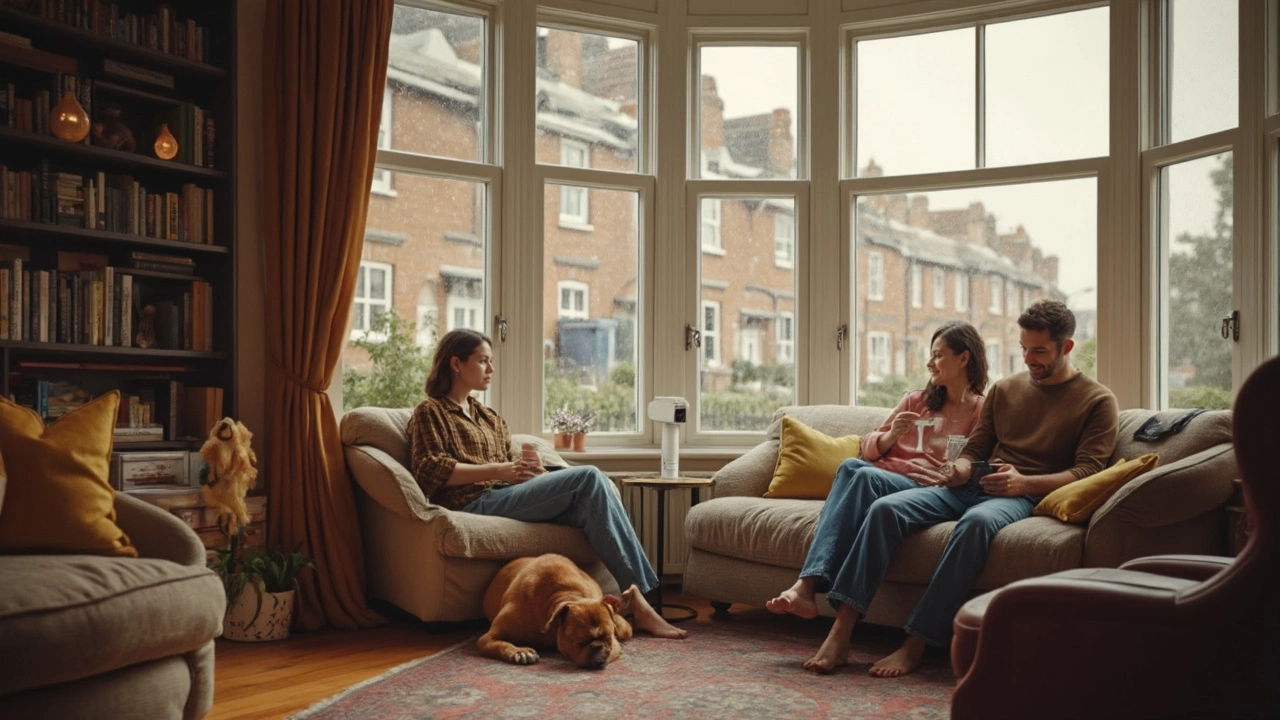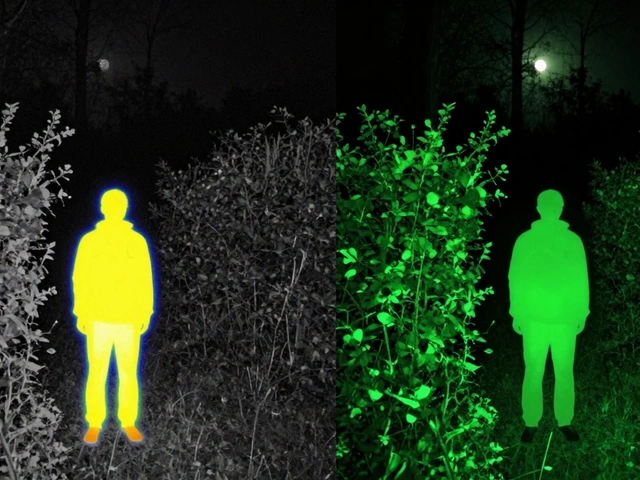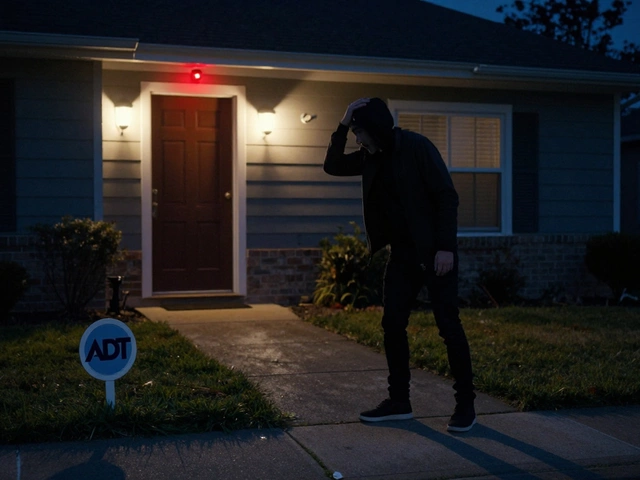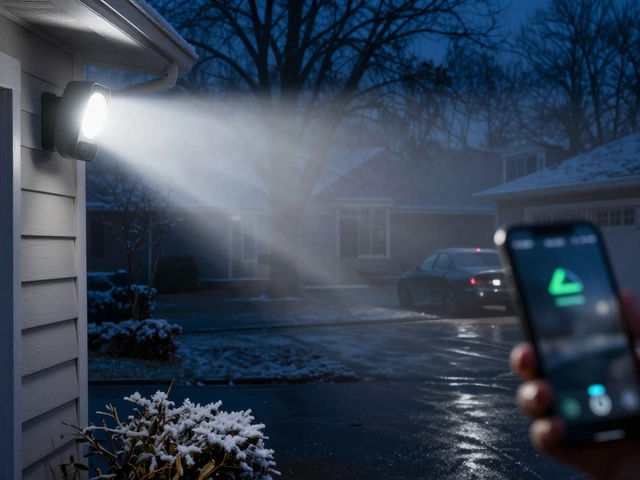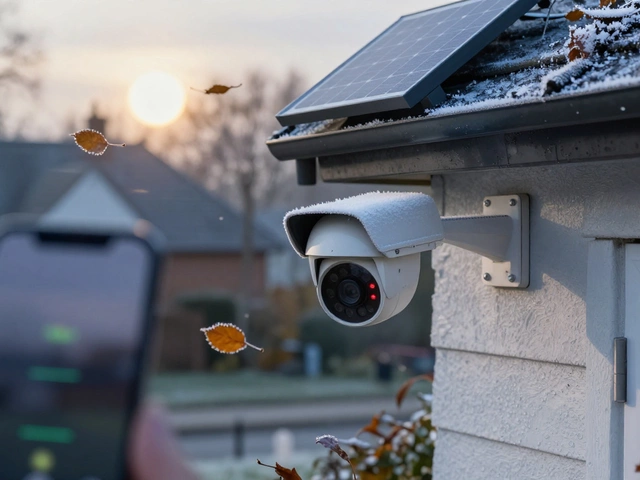Trying to figure out if you should put security cameras inside your house, outside, or both? You’re not alone. A camera by the front door seems obvious, but what about your hallway or garage? People want to protect what matters—whether it's Amazon boxes or their dog getting into the trash.
Here's the deal: both indoor and outdoor cameras have their perks and weaknesses. Indoor cameras can help you check up on family and see who's in your living room while you're at work. But outdoor cameras are your main shield against package thieves or random people creeping around your property.
No camera does everything. A fancy setup outside might be useless if someone sneaks in the back door, and an indoor camera can't stop a break-in before it happens. The trick is knowing what each camera type brings to the table, so you can cover your bases without wasting cash.
- What Indoor Cameras Do Best
- Strengths of Outdoor Cameras
- Privacy Concerns and Legal Stuff
- Weather, Durability, and Placement
- Budgeting for Security
- Mixing Indoor and Outdoor for Complete Coverage
What Indoor Cameras Do Best
Indoor cameras are the go-to for keeping an eye on what happens inside your home when you’re not there. Think of these as your always-on window to the stuff you care about—family, pets, packages dropped just inside the door, you name it. The best part? Most models are easy to set up and connect straight to your phone.
So what makes indoor cameras stand out? For starters, they’re perfect for monitoring who’s coming and going. If your kids get home from school before you do, you can check if they made it safely. Got a dog that chews on the furniture? Now you’ll know exactly when it happens. Indoor cameras also help you see what really happened when something’s missing or gets broken.
- Monitor high-traffic areas like entryways, living rooms, and hallways
- Check in on babysitters or house cleaners while you’re away
- Catch indoor-only issues—like smoke alarms going off or leaks near water heaters
- Get real-time alerts for unexpected movement
Another advantage: indoor cameras sidestep some legal headaches you can run into outdoors, like accidentally filming neighbors or random people walking by. Just make sure not to put them in private spaces like bathrooms or guest rooms—privacy laws get sticky there.
The numbers back up their usefulness. A 2024 survey by SafeHome found that indoor cameras helped resolve 62% of home break-ins caught on video, often letting owners identify the thief faster. They're also a favorite for checking up on deliveries—no more wondering if your latest online order got stolen between the front door and the kitchen table.
| Common Uses | Benefits |
|---|---|
| Watching kids and pets | Peace of mind, prevent accidents |
| Monitoring cleaners or workers | Accountability, security |
| Checking entry points | Catch break-ins fast |
| Notifying about smoke/CO alarms | Immediate action, less damage |
The takeaway: indoor cameras cover your home’s everyday action. If you want to know what really happens when you’re out—or just want proof when your teen says he didn’t eat the last piece of cake—indoor cameras are your backup.
Strengths of Outdoor Cameras
Outdoor cameras are basically your first line of defense. These guys are designed to keep watch over driveways, porches, backyards, and even the side gate nobody ever uses. They’re built to handle weather and spot trouble before it gets anywhere near your front door. That’s why a lot of homeowners put them up on entry points, garages, or even just to keep an eye on their cars overnight.
One big advantage? Outdoor cameras can scare off would-be thieves just by being visible. A 2023 security industry survey found that over 60% of convicted burglars said they'd skip a house with visible cameras outside. That’s a pretty cheap insurance policy.
- They’re made to stand up to rain, snow, heat, and freezing cold.
- Models with night vision (look for infrared or “color at night” features) actually capture clear images in the dark, which helps for late-night porch pirates.
- Wide-angle lenses give you a bigger field of view, so one camera can cover your whole driveway.
- Most outdoor cameras are tamper-resistant—mounted high up or in tough housings to stop anyone from smashing them easily.
- If something does go down—like a package theft—you’ve got video footage you can share with the cops. It makes a big difference for getting your stuff back or just helping catch the thief.
Let’s look at a quick breakdown of what sets these cameras apart when it comes to outdoor cameras:
| Feature | Benefit | Common Info |
|---|---|---|
| Weatherproof Rating | Won’t die in rain or snow | Look for IP65 or higher |
| Night Vision | See what’s happening at night | Infrared or color at night up to 30 meters |
| Smart Alerts | Get phone notifications for movement | Person/vehicle/package detection in modern models |
| Remote Viewing | Live view from anywhere | Works with most phone apps |
Keep in mind, you’ll need to mount them where they actually cover entrances or high-risk spots, not just wherever there’s an outlet. And for anyone worried about privacy, point them away from neighbors’ windows to avoid any drama. A solid outdoor camera setup pays for itself the first time it scares off someone up to no good.
Privacy Concerns and Legal Stuff
Before you install any indoor cameras or mount those outdoor models on your porch, you should know what’s legal—and what could land you in trouble. Privacy laws aren't there just to annoy you; they're serious about stopping anyone from recording private spaces without permission.
If you’re in the U.S., here’s what actually matters: you can put cameras on your property, but you can’t record places where people expect privacy—like bathrooms or bedrooms—even if it’s in your own home. Recording audio is stricter, too. Some states like California and Florida expect you to warn everyone or get them to agree if audio will be recorded at all (it’s called "two-party consent").
- Don’t point outdoor cameras at neighbors’ windows or into their yards. That’s a fast track to a police complaint or even a lawsuit.
- Be upfront with guests or babysitters about cameras inside your home. Stick up a simple sign if you want to be extra clear.
- Check your state’s laws. Laws can be wildly different. For example, in Illinois, you can’t secretly audio record at all, while in Texas, you can record video in public areas on your own property with no worry.
People actually care about this stuff. In a 2023 Pew Research poll, over 61% of adults said they worry about how often they’re being recorded at home or in public, especially if they don’t know about it. Being careless can turn home security into a personal privacy drama—no one wants that in their neighborhood group chat.
| Location | Video Recording | Audio Recording |
|---|---|---|
| California | Allowed, but not in private areas | Two-party consent |
| Texas | Allowed, can record public areas of your property | One-party consent |
| New York | Allowed, but privacy respected indoors | One-party consent |
| Illinois | Allowed, private areas off-limits | Two-party consent |
If you’re setting up cameras that capture shared apartment hallways, check with your HOA or landlord. Some buildings straight-up ban cameras in shared spaces. When in doubt, ask, because removing cameras is a pain (and possibly expensive) if you get it wrong.
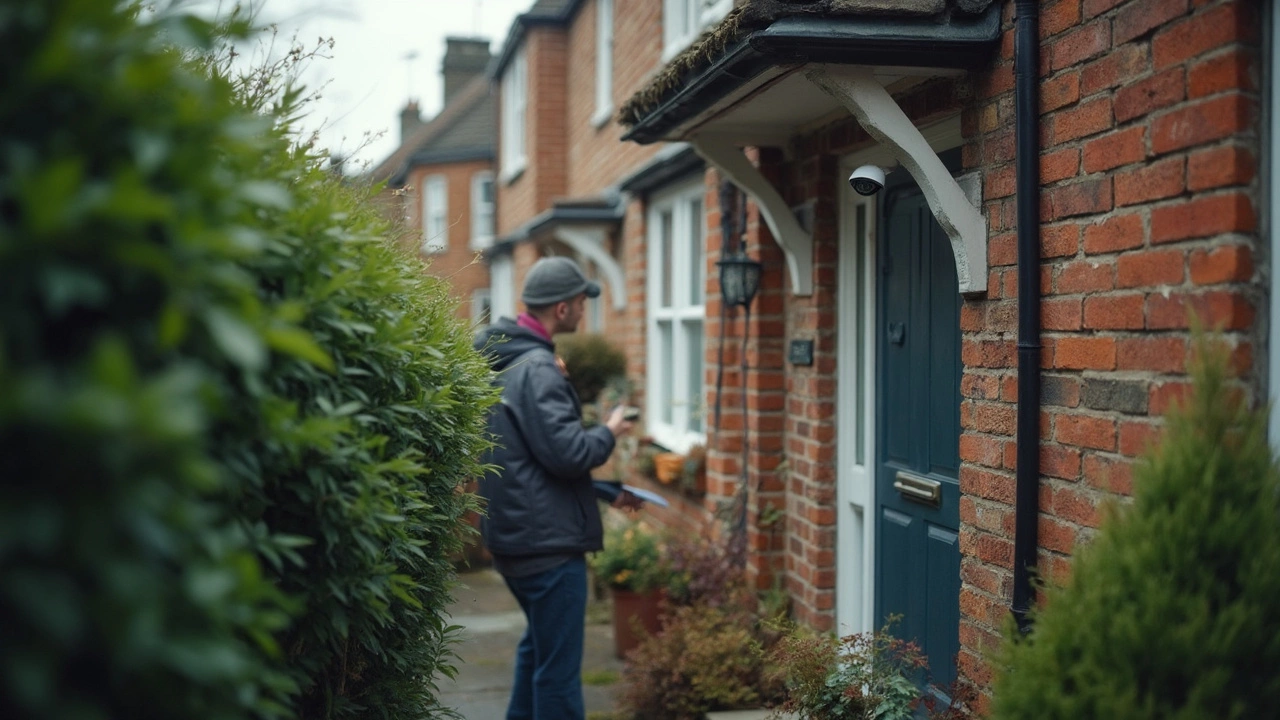
Weather, Durability, and Placement
If you’re placing cameras outside, weather is your biggest enemy. Think rain, snow, freezing cold, summer heat, or even dust storms. Some outdoor cameras can handle just about anything, but not all of them are built tough. When checking boxes, look for a camera’s IP rating. IP65 means splash-proof, but IP67 can survive full-on heavy rain, and even a dunk in the pool for a few minutes.
Cold snaps and heat waves can also mess with outdoor cameras. Most good models keep working from -4°F up to 122°F. Wild swings outside these numbers, especially over time, can kill cheap devices or drain batteries faster. If you live somewhere with brutal winters or roasting summers, spend a little more for a camera that can handle it. Wired outdoor cameras skip battery pain, but wireless ones need to have a steady power supply, or you’ll end up climbing a ladder to charge them every week.
Here’s a handy table to check what the average cameras really handle:
| Camera Type | Typical Temp Range (°F) | Weatherproof Rating |
|---|---|---|
| Outdoor Camera | -4 to 122 | IP65/67 |
| Indoor Camera | 32 to 104 | None or IP20 |
Placement matters big time, too. Outdoor cameras should go high enough to avoid getting stolen but still low enough to capture faces. Under an eave or porch roof is perfect—shields from rain and direct sun, keeping your investment safe. Angle them so you get a clear shot of entry points like doors, gates, and even your driveway. For barns or detached garages, don’t forget wifi range—many outdoor cameras need a solid signal to work.
Home security starts inside, but don’t overlook indoor placement. Keep them in a spot where they watch entrances, hallways, or valuables. Don’t point a camera through a window; most can’t deal with glare or reflections, especially at night when the infrared kicks on and just bounces off the glass.
Want your cameras to last? Clean the lens every so often, and check for cobwebs or mud. A well-placed, weather-ready camera will pay off when you really need those recordings.
Budgeting for Security
Stressing over the cost of home security cameras? You don’t have to drop a fortune to set up decent protection, but you do need a plan. Start by deciding how much coverage you want. A single indoor camera for your living room could run as little as $30, but if you want outdoor eyes on every entrance, costs can climb fast.
Here’s what you should think about before you bust out the credit card:
- Camera Type: Indoor models are almost always cheaper than weatherproof outdoor cameras, mostly because they don’t need heavy-duty casings or night vision that can handle pitch black backyards.
- Resolution and Tech: 1080p cameras are kind of the sweet spot these days—clear enough to see faces but not as pricy as 4K. Add-ons like smart notifications and cloud storage can bump up the price.
- Subscription Costs: Most top brands (like Ring, Arlo, or Nest) charge extra to store video clips. This usually ranges from $3 to $15 a month, depending on how many cameras you have and how long you want to save footage.
- DIY vs Pro Installation: Many cameras are plug-and-play, but if you want a more complex setup outside, you might need an installer. That adds another $100–$200 per camera, easy.
Check out this quick breakdown of typical costs you’ll run into:
| Equipment | Low-End Cost | High-End Cost |
|---|---|---|
| Indoor Camera | $30 | $200 |
| Outdoor Camera | $50 | $300 |
| Cloud Storage (per cam/mo) | $3 | $15 |
| Professional Install (per cam) | $100 | $200 |
If you’re on a budget, mix indoor and outdoor cameras where it counts most—like the front door or main hallway. Some brands even offer starter bundles, which give you a couple of cameras, some sensors, and maybe a doorbell cam at a discount. Skipping fancy features like color night vision or person alerts can also keep the price down.
Whatever you do, make sure your security setup fits your real-life needs—not just slick ads. That way you’re not overspending, but you still get the protection you actually care about from your home security setup.
Mixing Indoor and Outdoor for Complete Coverage
If you’re serious about beefing up your home’s security, mixing both indoor and outdoor cameras just makes sense. Think of it like having offense and defense in the same game — if someone slips past your outdoor camera, you’ll still have eyes inside catching what happens next.
The basics: put outdoor cameras at every entry point—front door, back door, and any side gates. These can spot things like package theft, vandalism, or prowlers before they get in. Then, set up indoor cameras in main spots like the living room, hallways, or just inside major doors. These let you check in on deliveries, older family members, or what’s happening if an alert goes off.
Studies say homes without camera setups are around 300% more likely to be broken into. And when break-ins do happen, indoor footage is usually how police ID suspects. Pairing both systems covers your blind spots. Here’s a breakdown showing what each camera type catches best:
| Camera Type | Main Coverage | Common Use |
|---|---|---|
| Outdoor | Driveways, yards, gates, doors | Deter prowlers, record theft, monitor deliveries |
| Indoor | Living spaces, hallways, entrances | Catch intruders after entry, watch pets/family, verify alerts |
But here’s the trick: balance is everything. Too many cameras can feel invasive or blow your budget. Instead, follow these quick tips:
- Don’t point indoor cameras at bedrooms or bathrooms to respect privacy. Stick to public or main areas.
- Go for cameras with motion alerts and cloud or local storage so you don’t miss anything important.
- Wire outdoor cameras safely or choose battery/wireless models for tricky spots. Make sure they’re weatherproof—look for IP65 or higher ratings.
- Tweak settings so you’re not flooded with pointless alerts every time a squirrel runs by.
The best setups combine both indoor and outdoor cameras, tailored to your space and what really needs protection. That way, you’re not just hoping for the best—you’re actually ready for it.

